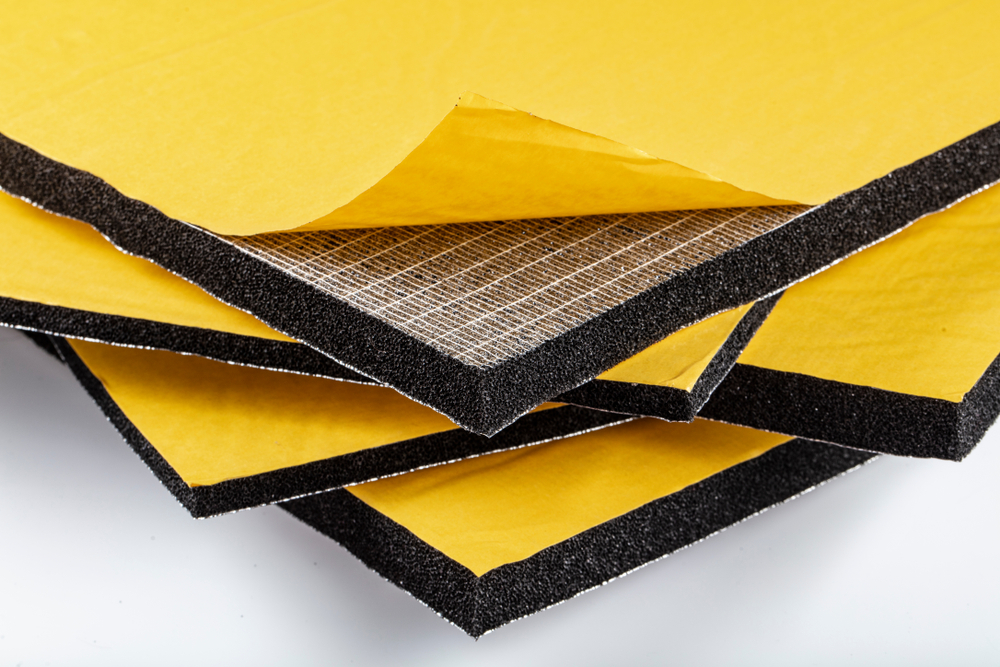Thermal & Acoustic Insulation Materials
Insulation in buildings is more than just a matter of comfort. It’s a critical component in creating efficient, quiet, and comfortable indoor environments. The choice of insulation materials has a profound impact on both thermal efficiency and soundproofing in structures, making it a pivotal consideration in modern building construction.
What are Thermal and Acoustic Insulation?
Insulation is not just about keeping a space warm in winter or cool in summer. It’s about creating a controlled environment, irrespective of external conditions. Thermal insulation materials reduce heat transfer, helping maintain a consistent indoor temperature. On the other hand, acoustic insulation materials focus on dampening sound, reducing noise transmission between rooms or from the outside. The proper selection and application of these materials play a fundamental role in the overall performance of a building.
Types of Thermal & Acoustic Insulation Materials
While thermal and acoustic insulation materials often serve different purposes, some materials can offer benefits in both areas. Let’s explore these materials and their unique characteristics.
Thermal Insulation Materials: Types and Advantages
Fiberglass Insulation
Fiberglass, composed of fine glass fibers, is one of the most ubiquitous insulation materials due to its high thermal resistance and cost-effectiveness. It is particularly effective in preventing heat transfer via convection and is available in various forms like batts, rolls, and loose-fill insulation. Its ease of installation makes it a go-to choice for both residential and commercial buildings. Additionally, fiberglass is non-flammable and resistant to moisture damage, adding to its appeal.
Mineral Wool
Mineral wool, encompassing rock and slag wool, is renowned for its fire resistance capabilities, making it a preferred choice in applications where fire safety is paramount. This material also boasts excellent sound absorption properties, contributing to its versatility as both a thermal and acoustic insulator. It’s denser than fiberglass and provides superior insulation per inch of thickness. It’s also environmentally friendly, often made from recycled materials, and resistant to mold and mildew.
Polyurethane Foam
Polyurethane foam stands out with its high R-value, a measure of thermal resistance, making it one of the most effective insulation materials available. It comes in two forms: spray foam and rigid foam boards. Spray foam is particularly effective in sealing gaps and cracks, ensuring airtight insulation. This adaptability makes it ideal for irregular spaces and around obstructions. Polyurethane foam is also known for its durability and moisture resistance.
Polystyrene (EPS and XPS)
Polystyrene insulation, available as Expanded Polystyrene (EPS) and Extruded Polystyrene (XPS), offers excellent moisture resistance and structural strength. EPS is noted for its versatility and cost-effectiveness, while XPS is recognized for its higher R-value and superior water resistance. These materials are often used in below-grade applications and for insulating walls, roofs, and floors.
Acoustic Insulation Materials: Reducing Noise Effectively
Acoustic Foam Panels
Designed to absorb sound, acoustic foam panels are a common solution for reducing echo and enhancing sound quality within spaces. These panels are particularly effective in studios, home theaters, and offices, where controlling sound reflections is crucial. The open-cell structure of the foam helps in trapping and dissipating sound waves, thereby improving acoustics.
Mineral Wool and Fiberglass
Both mineral wool and fiberglass serve dual roles in providing thermal insulation and sound dampening. Their fibrous compositions make them effective in absorbing sound, thus reducing noise transmission and reverberation in buildings. This dual functionality makes them cost-effective solutions for projects that require both thermal and acoustic insulation.
Mass-Loaded Vinyl (MLV)
MLV is a dense, yet flexible material, used extensively in soundproofing applications. Its mass helps block sound transmissions, making it ideal for use in walls, ceilings, and floors, especially in limited space. MLV can be used alone or in combination with other materials to enhance its soundproofing efficiency.
Comparing Acoustic vs Thermal Insulation
| Aspect | Thermal Insulation | Acoustic Insulation |
| Primary Function | Minimize heat transfer between inside and outside of a building | Reduce sound transmission and echo within a space |
| Common Materials | Fiberglass, Mineral Wool, Polyurethane Foam, Polystyrene | Acoustic Foam Panels, Mineral Wool, Fiberglass, Mass-Loaded Vinyl |
| Application | Walls, roofs, floors, attics | Walls, ceilings, floors, specialized rooms like studios |
| Key Benefits | Energy efficiency, cost savings on heating and cooling, improved comfort | Enhanced sound quality, increased privacy, improved ambiance |
Smartech’s Solutions in Thermal and Acoustic Insulation
Smartech, in partnership with Steinbach and AluThermo, offers a comprehensive range of thermal and acoustic insulation products designed for efficiency and versatility in both commercial and residential settings. These products include:
- Steinbach’s Acoustic Polyurethane Foam Insulation: Designed for effective sound absorption and thermal regulation, ideal for various industrial and commercial applications.
- AluThermo’s QUATTRO Insulation: A lightweight, 7-layer insulation that’s more effective than mineral wool, suitable for roofs, floors, and walls.
- Commercial HVAC Ductwork Insulation: Enhances energy efficiency, reduces noise, and features moisture and fire-resistant materials.
These innovative solutions from Smartech are tailored to meet the specific needs of your projects, ensuring optimal performance, durability, and cost-effectiveness. Visit Smartech’s Insulation Products and get in touch to learn more.

Looking for More Information?
Check out our Resources or Contact Us
